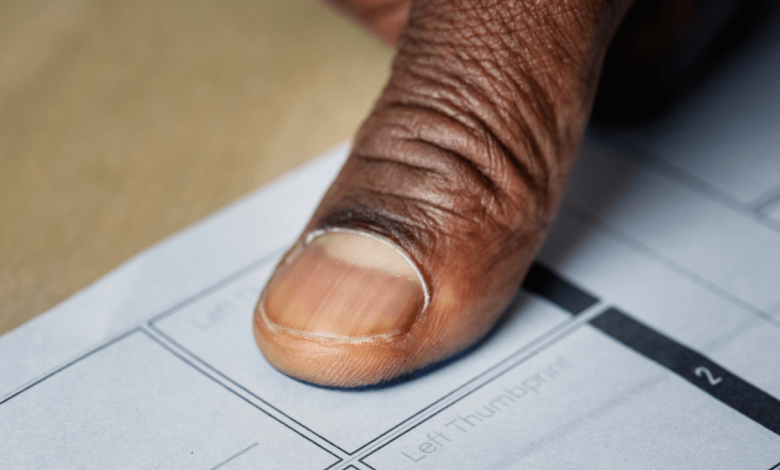Struggling with SASSA SRD Grant Biometric Verification? Here’s What You Need to Know!

If you’ve encountered difficulties with the SASSA SRD Grant biometric verification process, you’re not alone. Many beneficiaries face challenges, especially when they are not familiar with how the verification works. Biometric verification is a key part of ensuring that the SRD (Social Relief of Distress) Grant reaches the rightful individuals.

In this article, we’ll guide you through the biometric verification process, explain who needs to complete it, and provide tips for overcoming common challenges.
What is Biometric Verification?
Biometric verification refers to the process of identifying individuals using unique biological traits. For SASSA SRD Grant applicants, biometric verification includes facial recognition, fingerprint scanning, and voice recognition. These methods ensure that the person applying for the grant is who they claim to be. This helps prevent fraud, identity theft, and duplicate claims, which ultimately safeguards public funds meant for those in need.
By confirming identity through biometrics, SASSA ensures that only eligible individuals receive the SRD Grant, making the process more secure and transparent.
Who Needs to Complete Biometric Verification?
Not everyone needs to complete biometric verification. Let’s break it down based on your status as a grant applicant or beneficiary:
1. New SASSA SRD Grant Applicants
If you are a new applicant for the SRD Grant, you will need to complete biometric verification before your application is processed and approved. This is a necessary step to confirm your identity and ensure you are eligible for the grant.
2. Ongoing Beneficiaries
Most ongoing beneficiaries don’t need to re-verify their biometric data unless they face specific issues. Some of the circumstances under which you may need to verify your identity again include:
- Referred Status: If your application is flagged or referred for additional review.
- Grant Suspension: If your SRD Grant has been suspended and you need to reactivate it.
- Updating Sensitive Information: If you change your phone number, banking details, or other essential personal information linked to your SRD Grant.
3. Beneficiaries with Suspicious Activity
If you are suspected of identity theft or fraud, SASSA may require you to undergo biometric verification again to confirm your identity. This is particularly relevant if there are multiple claims made under your name.
How is Biometric Verification Done?
The biometric verification process is simple but requires attention to detail. Here’s a step-by-step guide on how it’s done:
1. Receive a Verification Link
SASSA will send a link to your registered phone number via SMS. This link will direct you to the verification page. It’s important to make sure your contact details are up to date to receive this SMS promptly.
2. Take a Selfie for Facial Recognition
Once you click on the link, you will be prompted to take a clear selfie using your phone or computer. This photo will be compared to your official ID document to confirm your identity. Ensure that the photo is well-lit and clear for successful verification.
3. Submit Your Selfie
You must submit the selfie within 3 days of receiving the link. If you fail to do so within this time frame, your verification will fail, and you will need to request a new verification link.
4. If You Don’t Receive the Link
If you don’t receive the verification link within 2 days, don’t panic! You can simply request the link again via the same platform you initially applied through.
Where Does Biometric Verification Take Place?
While the majority of SASSA beneficiaries can complete biometric verification online through their mobile devices or computers, some cases may require a visit to a SASSA office.
1. SASSA Office Verification
In some cases, you may need to visit a SASSA office if the biometric verification system isn’t available for your case online. This could be due to the system’s limitations or the type of ID you have.
2. Remote Verification Options
For beneficiaries who face mobility challenges or live in remote areas, SASSA offers some remote verification options. These may include voice recognition or facial recognition via mobile devices, which allows you to verify your identity without visiting a SASSA office.
Common Challenges and Tips for Successful Verification
While the biometric verification process is designed to be straightforward, there are common challenges that many beneficiaries face. Here are some tips to help you overcome these issues:
1. Issues with Older Green ID Books
If you are using an older green ID book, you might face difficulties with the biometric verification process. This is because older IDs lack advanced biometric features, which can lead to errors during verification.
Tip: If your verification fails, you may need to obtain a new biometric-enabled ID. Visit the Department of Home Affairs for more details on how to upgrade your ID.
2. Not Being Aware of the Requirements
Many beneficiaries don’t realize that biometric verification is mandatory until they face delays in receiving their grants. This often happens when SASSA attempts to contact applicants or when there is an issue with payment.
Tip: Proactively check your SRD application status online or via SASSA’s official contact numbers. Staying on top of your application can save you time and frustration.
3. Failed Verification Due to Poor Selfies
Your selfie is a crucial part of the verification process. If the photo is unclear, blurry, or doesn’t match your ID, the system may fail to verify you.
Tip: When taking your selfie, ensure the lighting is good, your face is visible, and there is no obstruction. Follow the instructions on the verification page carefully to ensure the photo meets the system’s requirements.
4. Delays in Receiving the Verification Link
If you don’t receive the verification link on time, it may cause delays in your application. You may need to request a new link.
Tip: Make sure your phone number and contact details are correct in the SASSA system to avoid missing important messages.
Why Is Biometric Verification Necessary?
Biometric verification is essential to maintain the integrity of the SRD Grant system. Here are some of the key reasons why this process is so important:
1. Preventing Fraud
By using biometrics, SASSA can prevent fraudulent claims, ensuring that only the legitimate beneficiaries receive the grant. This helps protect public funds from being misused by individuals who aren’t entitled to them.
2. Securing Personal and Financial Data
Biometrics provide an added layer of security for your personal and financial information. By verifying your identity through unique biological traits, SASSA ensures that your data is handled safely and securely.
3. Speeding Up Processing
Biometric verification helps streamline the application process. Once verified, applicants can receive their grants more quickly and efficiently.
4. Protecting the Rights of Beneficiaries
With biometric verification, SASSA ensures that the SRD Grant is only paid to eligible individuals, thus protecting the rights of those in need and making the process more transparent.
How to Get Assistance
If you are facing difficulties or need help with the biometric verification process, you can contact SASSA directly:
- SASSA Helpline: Call 0800 601 011 for assistance.
- WhatsApp Support: Reach out to SASSA via their official WhatsApp number for easier communication.
Check also: How to Download and Submit Your SASSA Disability Medical Form: A Step-by-Step Guide
Biometric verification is a necessary and vital part of the SASSA SRD Grant process. Although it may seem challenging at first, understanding the steps involved and preparing ahead of time can help you complete the verification successfully. Always make sure your contact information is up to date, follow the verification instructions carefully, and don’t hesitate to reach out to SASSA for support if needed.
By completing this process correctly, you ensure that your SRD Grant continues without any hitches, and you can receive the support you need during these tough times.




